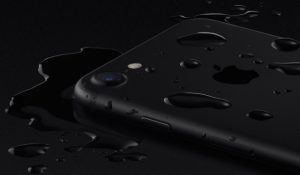The OnePlus 3 was one of our favourite smartphones released last year, but it was quickly replaced by the identical on the outside, slightly updated on the inside, OnePlus 3T.
Has the Chinese brand continued its winning streak? Or is the OnePlus 3T too similar to its predecessor to succeed?
The smartphone has recently received an Android Nougat flavoured updated, so we've updated our review.
One of the best looking smartphones availableOnePlus has never really made a bad looking phone, but the build quality has never been able to match the likes of Samsung and Apple. The OnePlus 3 and 3T change that with their metal unibody design.
The great thing about the design is that it feels premium as well, it's very tactile. It certainly puts OnePlus up there with the likes of HTC, Samsung and Apple.
The OnePlus 3T is a large phone with a 5.5-inch screen. It's exactly the same size as the 3, measuring 152.7 x 74.7mm, but thanks to the small bezel it is nicely balanced in the hand. At only 7.4mm, with a shallow curved back, it feels really thin, which we like.
The AMOLED display itself it vibrant, with Full HD resolution and a pixel density of 401 PPI. Sure, that's not as sharp as the Samsung Galaxy S7's 534 PPI, but it's we're not inspecting it through a magnifying glass.
The curved back and gently tapered edges make it comfortable to hold. The buttons and switches feel reassuringly solid, and it's durable enough for me to shove in a pocket without worrying too much.

Below the screen is a pill-shaped home button with a lightning fast fingerprint sensor and two capacitive keys which can be programmed how you like (we have them as 'back' and 'multitask').
While the OnePlus 3T is a well-designed handset, it does lack the more premium features which Samsung has started to implement, like the glorious Edge display or IPX waterproofing.
How much RAM?!The OnePlus 3T comes packing a Snapdragon 821 processor, that's an update on its predecessor, which featured the Snapdragon 820. Of course, you won't notice the difference, with the upgrade having a slight positive effect on efficiency, but all you need to know is that this phone is fast, and performance hangups are extremely rare.
Just like the OnePlus 3, the 3T packs a massive 6GB of RAM - that's more than any other flagship out there, including the Samsung Galaxy S7.
Does this mean it's noticeable faster that other flagships? Not really. But it is very fast, and you won't be disappointed by the performance.

I really like the very minimal skin OnePlus has put over Android Nougat. Oxygen is close to stock, with slight improvements over Android O.G which makes navigation and customisation just a little bit easier. Although it's not as good as our favourite HTC 10 Sense UI.
The update to Android Nougat is very welcome, it adds useful UI enhancements, doze on-the-go to prolong battery life, and cosmetic updates which really improve the overall experience.
Battery life is good, the svelte OnePlus 3T houses a 3400mAh battery. That's good for a day's battery life, and a big improvement over the 3, which only had a 3000mAh battery. But where the OnePlus 3T really comes into its own is with Dash Charge.
Dash Charge is semi-proprietary tech which sees the handset replenish 60-percent of charge in 30 minutes. To do this you need to use the USB-C cable and charging block which comes in the box, otherwise, it'll charge at a normal rate.

That's incredibly useful if you happen to carry the Dash Charger around with you at all times.
The OnePlus 3T has 64GB or 128GB of internal storage, but unfortunately, there's no microSD card slot, so it can't be expanded.
NFC is back after going missing in the OnePlus 2, so now you can use Android Pay.
Say cheese!The OnePlus 3T features a 16MP camera and it's a really solid performer. It's quick to take pictures and usually does a pretty good job of handling light and colour when in auto mode.
The camera system is packed full of features, including phase detection autofocus, optical image stabilisation, electronic image stabilisation, HDR, HQ mode and dynamic de-noise.
Low light situations are also good, but can't quite match the S7 with its pretty-much-see-in-the-dark capability.
Image 1 of 8







Sometimes colours can look a little dull, especially if the scene is poorly lit. But on the whole, the images this camera can produce are sharp, detailed, and vibrant.
The camera app itself is simple to use. Auto mode is great, and for more advanced photographers there's also manual controls.
It's the front facing camera which has received a spec bump, now packing 16MP. It's a great performer, nice and sharp, perfect for selfies and probably one of the best we've seen.
VerdictEven forgetting the price, the OnePlus 3T is a terrific flagship smartphone which can proudly hold its own against the likes of HTC, Samsung, LG and Apple.
OnePlus has nailed that 'premium' feel with the new aluminium unibody, and the performance is right up there with the big dogs.
What's even more impressive is how polished this smartphone feels. Whereas previous generations lacked finesse, the OnePlus 3T, from software, to packaging, to hardware, is fully thought out and realised.
Then comes the price. When the OnePlus 3 originally launched it was just over £300, that made it an absolute steal. It's now £399, and while it's still a great price for what you're getting, it's no longer the steal it once was.
Liked this?
See where the OnePlus 3T is in our best smartphone 2017 ranking
Source: OnePlus 3T Review: Proves you don't need to spend more than £400 on a smartphone






 Yu (pictured) was joined on stage by Steve Rabuchin, VP of Amazon Alexa, who declared that mobile "is a particularly exciting sector" for the AI voice service.
Yu (pictured) was joined on stage by Steve Rabuchin, VP of Amazon Alexa, who declared that mobile "is a particularly exciting sector" for the AI voice service.